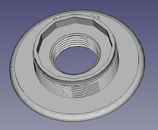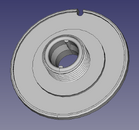tekkydiver
Contributor
- Messages
- 652
- Reaction score
- 482
No I am purely stating that a cobbled together repair is potentially unsafe and can prove disastrous if it re-fails at depth. It is impossible to adequately and appropriately test the integrity of a self-repair of this nature. Personally, I would use the repair kit if it cost less making it worth the experiment, but I would not allow another person to use the BCD. The fact that you were pompous enough to express that $75 to experiment with this repair kit is of no consequence makes one think that you have expendable income...if you truly do have expendable income then you would shell out the cash to replace your busted BCD, otherwise you are just truly pompous.
Good luck with whatever you decide to do.
-Z
So I was indeed correct, you have no first hand knowledge of the product. Thanks for the reply






